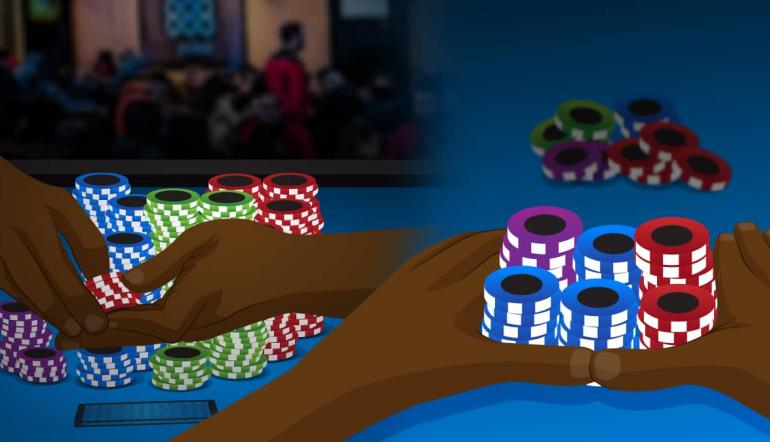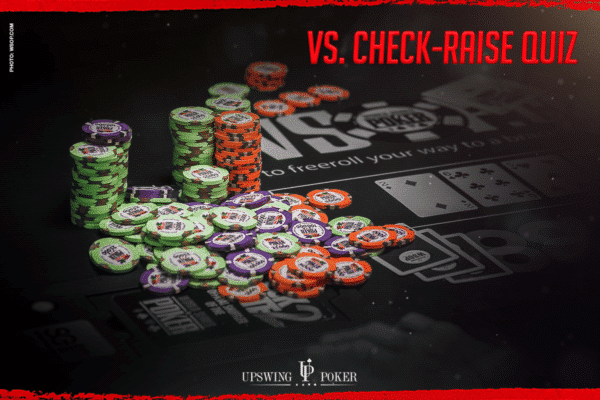Poker When To Check Raise
What is a Check Raise?
The majority of players choose to check-raise only when they don’t have the initiative. This is because donk-betting is still considered a relatively non-standard part of poker strategy, and hence it’s very common to check to the player with initiative by default and see if he continuation bets. It is unlikely that any comercial card room would ban check-raising in standard limit or no-limit games such as Stud, Hold'em or Omaha. The rules for some lowball limit games prohibit or restrict check-raising. Roberts Rules of Poker goes into more detail as to what games (Ex:A-5 Lowball) and on what streets check-raising is prohibited.
- The check raise is really not one of those poker strategies that you need to over think. In fact, when you break it down, it’s the simplest move you’ll make in poker. It’s something that every new player does by instinct, even when they have a poker hand that suggests that they might want to be a little more aggressive.
- Poker Beginners Guide: Checking, Betting, Folding, Calling & Raising. (the action of first checking and then raising when an opponent bets is known as a check-raise). If no-one bets on that round then the next card is dealt and again the first player has a choice whether to bet or check. Continue to The Button. Start; Texas Hold'em.
A play that used to be considered bad etiquette and still is in some old casinos. The check raise is a tricky and powerful move when used effectively in poker.
It is where a player will check (representing weakness) and then re-raise a bet on the same round of betting. Let’s took a look at an example:
Example Hand
Player A raises to £10 before the flop and Player B calls from the big blind. The flop comes 7s 8s 3d. Player B checks to the initial raiser. Player A bets £15 and Player B re-raises to £50.
Notice Player B checked, then raised the bet hence “check raise”.

Why Check Raise?
There can many reasons a player may opt for check raising. It can be designed to build the pot up for bigger bets and value later in the hand. It can also be used to represent a strong hand and in fact be bluffing. It can be used to exploit an aggressive player and it can also be used to semi bluff.
Perceptions of a Check Raise
Risks with Check Raising
By checking to your opponent you are risking giving free cards that can beat you. It also makes it harder to bluff if you have nothing as your opponent has less streets to fold to resistance. You need to feel pretty confident your opponent will bet if you are considering a check raise.
Secondly, if you are trying a check raise on a bluff that you are investing more than a standard bet. Let’s face it, if your opponent is strong, the fact you check raised isn’t going to make much of a difference.
There is also the risk that you do this move too often, even an intermediate player will pick up on tendencies so be careful not to over use the check raise.
If you enjoyed this post, perhaps you’d be interested in our training video membership? Feel free to check out some free material.
The check raise is often considered a deceptive line, because we take a passive action followed by an aggressive action. It should be a standard part of a poker player’s strategy however. It makes us tougher to play against and can frequently be more profitable than being the initial aggressor because it causes our opponent to invest additional money first, perhaps overextending himself.

Effect of Initiative
Playing as the cold-caller


Hand Selection
- Make the nuts by the river
- Has both 3-cards to a flush and 3-cards to a straight
- If our draw/backdoor-draw can make the nuts by the river then consider check-raising. If we are drawing to something dominated, consider check/calling instead and looking to bluff on a later street. The exception is bone-dry board textures where it is acceptable for us to defend our entire range by check/calling, barring any specific reads.
Sizing
Turn Play
- It’s correct for us to check/fold some hands at least, we can’t be barreling everything.
- Sometimes the turn problems are caused by a misunderstanding regarding flop play. If we are playing the flop correctly we should have some relatively strong draws in our flop check/raising range which can fire any turn regardless of the card. Examples would include nut-flush-draws, or oesds. See the PokerVIP.com training video for more information on this topic.
- Nut-flush-draws (including turned nut-flush-draws. Remember that non-nut-draws will not be raising the flop in most cases).
- Oesds. (Remember that FDs and OESDs are strong enough to barrel on almost all turn cards, regardless of whether the board pairs or a flush-draw completes.)
- Nut gutshots with at least one over. (Gutshots weaker than this can go into our turn check/folding range).
Check-Raising with Initiative
The idea here is that we make use of a tricky play which helps us to defend our checking range. The majority of players will be check/folding way too frequently after they skip their cbet OOP. This is because any time they have a hand they would like to continue with they put it into their cbetting ange. So skipping cbet OOP as the PFR is like holding up a white flag that says “you can bet, I’m definitely folding”.
Poker When To Check Raise Blood Sugar
Poker Raise Rules
- Our opponent continues with a well constructed range assuming we cbet, but fires too frequently if we check.
- Our opponent puts additional chips in to the pot which we can win assuming we check.
Poker When To Check Raise Blood Sugar

Texas Holdem Payout Chart
Putting it Together
- Our opponent's tendencies
- The effective stacks
- Our position
- Our opponents position
- Whether we have initiative
- The size of our opponents bet